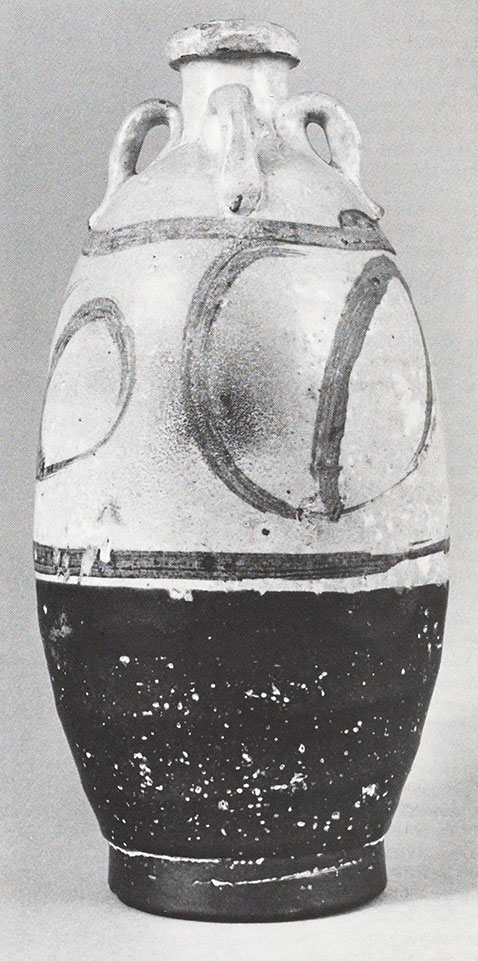Looking with the Heart
In the late summer, 1678, the potter Morita Kyuemon visited the great city of Kyoto, whose potters and connoisseurs of ceramics were famed throughout Japan. On his first journey outside his home province on the remote island of Shikoku, Kyuemon had been charged by the military lord who was his patron with improving both his own skills and his knowledge of the antique pieces that served as prototypes for the tea-ceremony wares that were his main product. He seized the opportunity to ask advice of a well-known Kyoto antique dealer.
I asked lzutsuya Han'emon whether there was not some way to learn the connoisseurship of ceramics. Han'emon replied that there was no way to take lessons as such. Rather, I must go into town regularly and spend every day learning by looking at all sorts of Chinese antiques. In the course of spending time with the antique dealers, I would naturally develop my skills of connoisseurship.
When I was asked to write an essay for this symposium covering the issue of "learning to see" from a museum perspective, the above passage from the diary of Morita Kyuemon came to mind. When posing his question, Kyuemon naively and hopefully used the verb narau, "to learn" from a formal course of lessons. Han'emon responded with the verb minarau, "to learn by looking." One learns to look by looking and looking. In addition, the looking is inseparable from handling. Ideally, one keeps the company of experienced people who have been looking for a long time.

If the pitfall of the printed image is a lack of sense of scale, weight, and texture, the same problem generated by the museum exhibition is compounded by an overabundance of light. We have come to expect objects on exhibit to float within halos of bright light against a dark ground. Moving from case to case - from brightness through darkness and on to brightness - we experience each burst of light as saying "Hey! This is important!" The object is presented as an exclamation point, preconditioning our reaction to it. Its surface is stripped and exposed. The movements of the glaze are frozen in the spotlight. The rounded weighted form of the object is reduced to a sharp weightless outline.
As I was puzzling over this paradox and wondering what to write, I was visited by a Japanese potter and his wife, both in their sixties. We were in a storeroom, looking at pots - hefting them, stroking them, turning them around and over. I asked him about how he had been taught to see, and he responded with a parable: "Look at things with the heart" (kokoro de mono we miru). By way of explanation he followed with examples. The samisen player is taught to memorize the music and then play without a score. Only that way can she sit upright, with back straight, and pour her energy into the instrument. If she has to follow a score, she bends over, and her music is weak and hesitant. The archer is taught to shoot with eyes closed. (The potter's grandfather used to practice outdoors at night.) Only then can he hit a target whose position is known with the whole mind and body.
He went on to translate these examples into what he had learned about making pottery. "If I want to make a new shape, I sketch, and I make trial pieces. But finally when I am ready to make the piece truly, I have to forget all that and simply throw the image that I hold, without hesitating, without looking at what I am doing on the wheel. I can't watch how I am finishing the edge of the rim and lifting my fingers away. I have to know already how I want to do that. I have to throw with my heart, not my mind."
I asked him about the process of copying an antique piece line for line, a process that Kyoto potters in particular are skilled in. "I take minute measurements of the original and make sketches. I handle it to understand its balance. I weight it. Then I practice. But again the making of the actual piece must leave all that behind. Otherwise what comes out is merely mechanical. And the maker is merely a skilled technician."
Without being asked, the potter addressed the question of light, inseparable from sight. We were looking at tea bowls in the storeroom, which is illuminated by a skylight. 'This soft light is fine. But there is no comparison to holding such a bowl in a tea room, seeing it in the light that filters through the thick white paper covering the window." His wife extended the thought: "Or in the striped shadows cast by the reed blind that covers the window in summer. When you first enter a room on a bright summer day, you cannot see anything. Only slowly do your eyes begin to discover the objects in the room. That's when a bowl can truly be understood."
Their remarks brought to mind an experience in Kyoto several years ago. One cold and cloudy November morning I was taken to see a famous tea room. The tiny room measured at most ten feet on a side. We were sitting on the mat-covered floor. The only light entered from a square opening cut into the roof. The planes of the roughly plastered walls were shades of charcoal gray, and the ceiling disappeared in darkness. The faces of my two companions were shadowed. This was a room built to the design of the same tea master who had loved black-glazed Raku tea bowls above all. I thought of what it would have been like to hold such a bowl in that space, with its black surface swallowing the faint light. When we stepped outside again, snow was falling.

